The automotive industry holds immense significance in shaping modern society.
Inextricably linked to contemporary lifestyles, cars exert a profound influence on mobility patterns.
This industry finds itself in the midst of a profound transformation driven by a confluence of factors.
The development of autonomous driving aims to enhance traffic safety and efficiency, while connected vehicles open up new horizons for navigation, entertainment, and data-driven services.
At the same time, increasing emphasis is being placed on sustainability and environmental awareness, necessitating new business models and adaptation to ever-stricter legal regulations.
In navigating this dynamic market environment, automotive manufacturers must embrace agility to meet emerging challenges effectively.
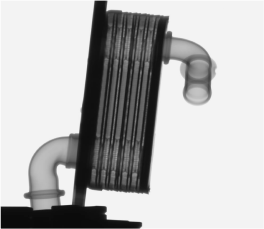
Materials testing has increased in importance within the automotive sector for various reasons.
To ensure the safety of occupants and other road users, vehicles must conform to stringent safety standards.
Materials testing plays a pivotal role in guaranteeing the structural integrity and reliability of components utilized in safety-critical areas such as bodywork, brakes, and steering systems.
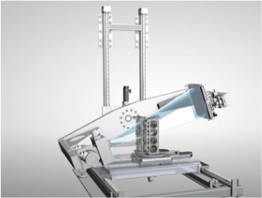
Furthermore, the Automotive Industry is actively pursuing light-weighting strategies to reduce fuel consumption and mitigate environmental impact.
Materials testing empowers manufacturers to identify materials that are both lightweight and robust enough to withstand the stresses encountered by vehicles.
In addition to these benefits, materials testing fosters innovation and cost savings, enabling manufacturers to adapt to the evolving needs of the industry.
As the realm of e-mobility gains prominence, battery testing is also becoming increasingly crucial.
The adoption of X-ray Technology and computed tomography (CT) for materials testing within the automotive sector has witnessed significant growth in recent years.
These technologies furnish advanced capabilities for the Non-destructive Testing inspection and evaluation of materials and components utilized in automobiles.
X-ray Technology:
commonly employed to visualize the internal structures of components without causing damage.
Operates by sending X-rays through the material, with the radiation absorbed by internal structures being recorded on a detector.
This method enables the detection of material defects, such as cracks, voids, pores, or inclusions, which remain imperceptible to the naked eye.
X-ray Technology is particularly well suited for inspecting welds, castings, and complicated structures.
Computed Tomography (CT):
It also leverages X-rays but elevates the inspection process to a higher level.
Computed Tomography has the capability to construct three-dimensional images of a component's internal structure by capturing X-ray images from diverse angles and subsequently reconstructing them.
This methodology imparts precise insights into a material's internal structure, geometry, and defects.
Computed Tomography technology empowers detailed analysis, proving important in troubleshooting, quality assurance, and materials development.
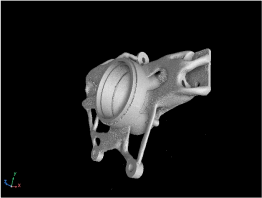
X-ray Technology and computed tomography offer multiple benefits to the automotive industry: Non-destructive Testing, quality control, material development, increased safety, and time and cost savings.
They prove to be important tools in the continuous development and optimization of materials and components for modern vehicles.

The automotive sector produces millions of components, necessitating materials testing to keep pace with the high production rates.
The challenge at hand is to streamline materials testing processes to meet demanding throughput requirements without compromising testing accuracy.
Modern materials testing and X-ray systems often come with substantial costs.
Don't Miss Out, Importance of Non-destructive Testing (NDT)
Given the industry's relentless cost pressures, the automotive sector confronts the task of deploying efficient inspection solutions that combine high performance with economic feasibility to prevent undue escalation of production costs.
In scenarios involving exceptionally high production volumes, as is often the case in automotive series production, the demand for high-performance inline systems equipped with automatic evaluation capabilities becomes paramount.
Such systems can be integrated seamlessly into production lines, yielding the shortest cycle times.
Selecting the appropriate system can be complex, entailing careful consideration of parameters such as size, speed, and cost.
The Automotive Industry, underpinned by stringent norms and standards for quality assurance and vehicle safety, faces the challenge of conducting materials testing and X-ray inspection that align with applicable regulations and requisites.
It is highly advisable to discuss the design of a testing system with specialized firms before implementation.
VCxray, with its team of application specialists, stands ready to offer expert assistance in this regard.
The integration of computed tomography (CT) into materials testing processes presents a unique set of challenges.
These include the relatively high costs associated with acquiring and operating CT scanners, the inherent complexity of the technology, the need for radiation protection measures, the extensive data processing and analysis requirements, and the challenges associated with handling large or heavy components.
Moreover, the integration of CT into existing processes and its potential impact on throughput demand careful consideration.
Despite these challenges, the advantages of CT usually outweigh the disadvantages.
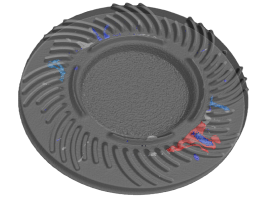
Among the foremost measurement tasks performed by CT are:
- Defect Detection
- Geometry Measurement
- Wall Thickness Measurement
- Porosity Analysis
- Material Analysis
- Assembly Inspection
- Component Comparison
- Composites Analysis
- Simulation and FEM Validation
In summary, CT emerges as a versatile and indispensable tool in materials testing, enabling comprehensive characterization and analysis of materials and components.
Its multifaceted capabilities facilitate quality testing and failure analysis across various industries.
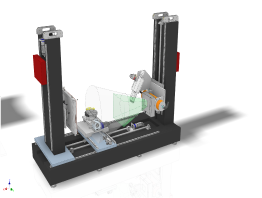
Computed tomography (CT) offers a multitude of advantages in materials testing, rendering it an exceptionally potent and valuable tool.
Next on Your Reading List, Top 7 Non-destructive Testing Methods that are Used Often
Some of the key advantages of CT in materials testing include:
- Non-destructive Testing:
CT ensures that materials or components undergo testing without suffering any damage.
This is of importance when components are earmarked for further testing or actual use.
- Visualization of Internal Structures:
Highly detailed 3D images, facilitate the visualization of internal structures within materials or components.
This capability enables the identification and analysis of intricate internal geometries, defects, cracks, inclusions, voids, and other material anomalies.
- High Resolution:
Modern CT scanners boast high-resolution capabilities, enabling the detection of even the minutest details and defects in materials.
This means that even micro-cracks and subtle irregularities can be revealed and assessed.
- Measurements and Sizing:
CT not only visualizes internal structures but also enables precise measurement and sizing of components and defects.
This proves invaluable when precision and tolerance are paramount.
- Non-destructive 3D Metrology:
CT can be harnessed for 3D metrology, facilitating the determination of both external and internal dimensions of components.
This can be particularly challenging or even impossible with conventional measurement techniques, especially when dealing with complex internal geometries.
- Material Analysis:
CT empowers material analysis, encompassing the determination of material density, composition, and porosity.
This facilitates the assessment of crucial material properties.
- Applicability to Various Materials:
CT's versatility extends to a wide spectrum of materials, including metals, plastics, ceramics, composites, and more.
- Time and Cost Savings:
CT streamlines the inspection of components, delivering time and cost savings.
The ability to promptly inspect components for defects without disassembling them or conducting extensive testing is a significant advantage in industrial manufacturing and quality assurance.
In conclusion, computed tomography in materials testing offers a non-invasive, precise, and comprehensive approach to evaluating material and component quality and integrity.
This, in turn, enhances production processes and product quality as in this customer example:
VCxray by VisiConsult designed a tailored system for a customer from the casting sector, focusing on the efficient inspection of heavy gearbox housings.
The toploader engineered for this purpose allows loading through an overhead crane, enhancing efficiency.
Furthermore, the transition from film-based to digital X-ray inspection was instrumental in augmenting productivity and precision.
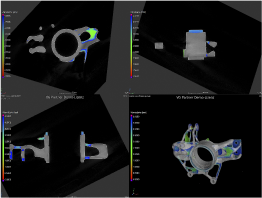
Computed tomography (CT) has emerged as a precious asset in the Automotive Industry's pursuit of safety, quality, and innovation.
These technologies empower manufacturers to navigate the evolving landscape of regulations, sustainability, and consumer expectations.
By embracing the capabilities of Computed Tomography, automotive companies can continue to drive progress and shape the future of mobility.










